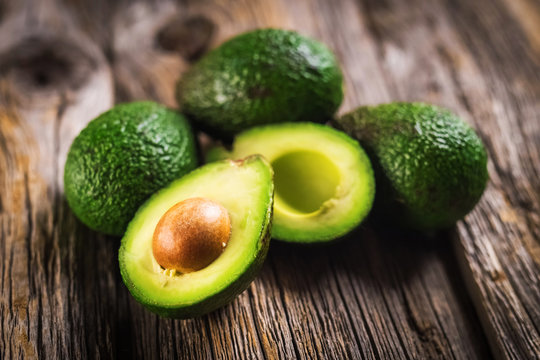Any sort of workout routine, building strength, balance, and generally your fitness, will result. A Bulgarian Split Squat is stated to be one of the most efficient exercises for developing lower-body power. With that, you contribute much to achieving all the aims mentioned above. We give you all the necessary information concerning Bulgarian Split Squat: its pros, its proper performance, as well as common mistakes, plus advanced variation.

What is a Bulgarian Split Squat?
This is the unilateral lower body; in that, you elevate one foot behind you on a bench or sturdy platform and squat with the other leg. The movement that targets your quadriceps, hamstrings, and glutes, and even engages your core for stability is the Bulgarian Split Squat.
Unlike the traditional squats, the Bulgarian Split Squat works one leg at a time. That makes it a pretty good exercise to work imbalances and strength overall. The exercise also helps in making balance and coordination that is going on in most sports as well as in daily activities.
Benefits of Split Squats
Including this exercise in your routine will produce great benefits for you:
1. Improved Unilateral Strength
Adjusting imbalances on the strength side between your dominant and nondominant sides will help you have an equal development of both legs while lessening the risk of injury.
2. Enhanced Balance and Stability
It does challenge your balance when doing Split Squats as it works to stabilize on one leg which improves your overall stability as well as coordination.
3. Greater Muscle Engagement
With the back foot raised, the Split Squat pushes most of the load on the working leg, thus promoting greater muscle activation, especially for the glutes and quads.
4. Versatility for All Fitness Levels
This exercise can be used both for beginners and advanced athletes. Whether you start with body weight or add resistance using dumbbells, it is fit for a wide range of fitness levels.
5. Functional Strength
Split Squat is a very natural movement that closely mirrors most of our everyday activities such as climbing stairs, so it is a functional movement that will enhance strength and mobility in life.
How to Perform a Squat
Step-by-Step Instructions
- Setup and equipment: Place a bench or solid platform behind you at about knee height.
- Positioning: Stand two feet in front of the bench and position the top of your back foot on the platform. Step into the ground with your front foot.
- Core Engagement: Engage your core muscles to keep your spine neutral throughout the lift.
- Lower Your Body: Bend the knee of the front leg to lower your body into a squat. The front knee should be in line with the toes and should never extend over them.
- Push Back Up: Pushing back up through the heel of the front leg into the beginning position, with the speed controlled throughout the movement.
- Repeat: Do as many reps on one leg and as many on the other leg as called for.
Tips for Proper Form
- Keep your chest up and your shoulders back.
- Keep your spine in a neutral position during the movement.
- Keep the front knee in line over your toes.
- Don’t let yourself lean forward too much.
Common Mistakes to Avoid
Despite proper guidance, mistakes are quite common during the performance of the Split Squat. Here are some common mistakes that should not be made:
1. Improper Foot Positioning
As close as your front foot is to the bench, then knee discomfort may occur. Check that your front foot lies comfortably on a range from the start.
2. Lack of Balance
This is a common problem among beginners not to balance properly. Either use a stable surface so there will be no fear when balancing or do body weight to gain confidence.
3. Overarching the Lower Back
Hyperextend back. Note the engagement of the core and neutral spine.
Variations of Split Squats
Depending on the fitness level and the goals of the user, there are some variations that can be done in Split Squats. Here are some options for variations.
For Beginners:
- Bodyweight Bulgarian Split Squat: Emphasis should be given to movement without adding any weight.
- Assisted Bulgarian Split Squat: Use the support of the wall or rail while doing squats.
For Advanced Fitness Enthusiasts:
- Weighted Split Squat: Add dumbbells or a barbell for added resistance.
- Jump Bulgarian Split Squat: Take an explosive jump at the top of the movement.
For Targeted Muscle Groups:
- Glute-Emphasizing Bulgarian Split Squat: Stand with your torso turned forward to emphasize the glutes.
- Quad-Dominant Split Squat: Have your torso upright to primarily hit your quads.
Incorporating Bulgarian Split Squats into Your Routine
It is easy and rewarding when incorporating Split Squats into an individual’s workout routine. Use these guidelines to add strength to your legs:
- Frequency: Execute this exercise 2 to 3 times a week.
- Repetitions and Sets: Start with 8-12 repetitions per leg set and do 3 sets.
- Pairing with Other Exercises: Partner Split Squats with lunges, step-ups, and deadlifts for a workout in the lower body of your body.
Frequently Asked Questions About Split Squats
1. How High Should the Bench Be?
- The bench should be at knee height or slightly lower to ensure proper alignment and comfort.
2. Can Beginners Do Split Squats?
- Beginners can start with body weight and focus on form before progressing to weighted variations.
3. What If I Experience Knee Pain?
- Take a closer look at your form and correct your foot position. If the pain persists, seek the guidance of a fitness professional or a physical therapist.
4. Are Split Squats Better Than Traditional Squats?
- Both have strengths. Split Squats can be done directly over the muscle, increasing balance, while conventional squats increase general lower body strength.
Advanced Tips for Maximizing Results
- Use Tempo Control: Slowly lowers the weight, hence, increasing time in tension.
- Gradually Increase: Repeat or increase weight depending on what is needed.
- Focus on Mobility: Increase hip flexors and quads to increase movement.
Conclusion
One of the most versatile and powerful exercises for transforming lower body strength and balance, Split Squat, can only be unleashed if it finds its way into the routine and the proper techniques are followed. Whether a beginner or advanced athlete is training at a certain level, it has something to offer.











